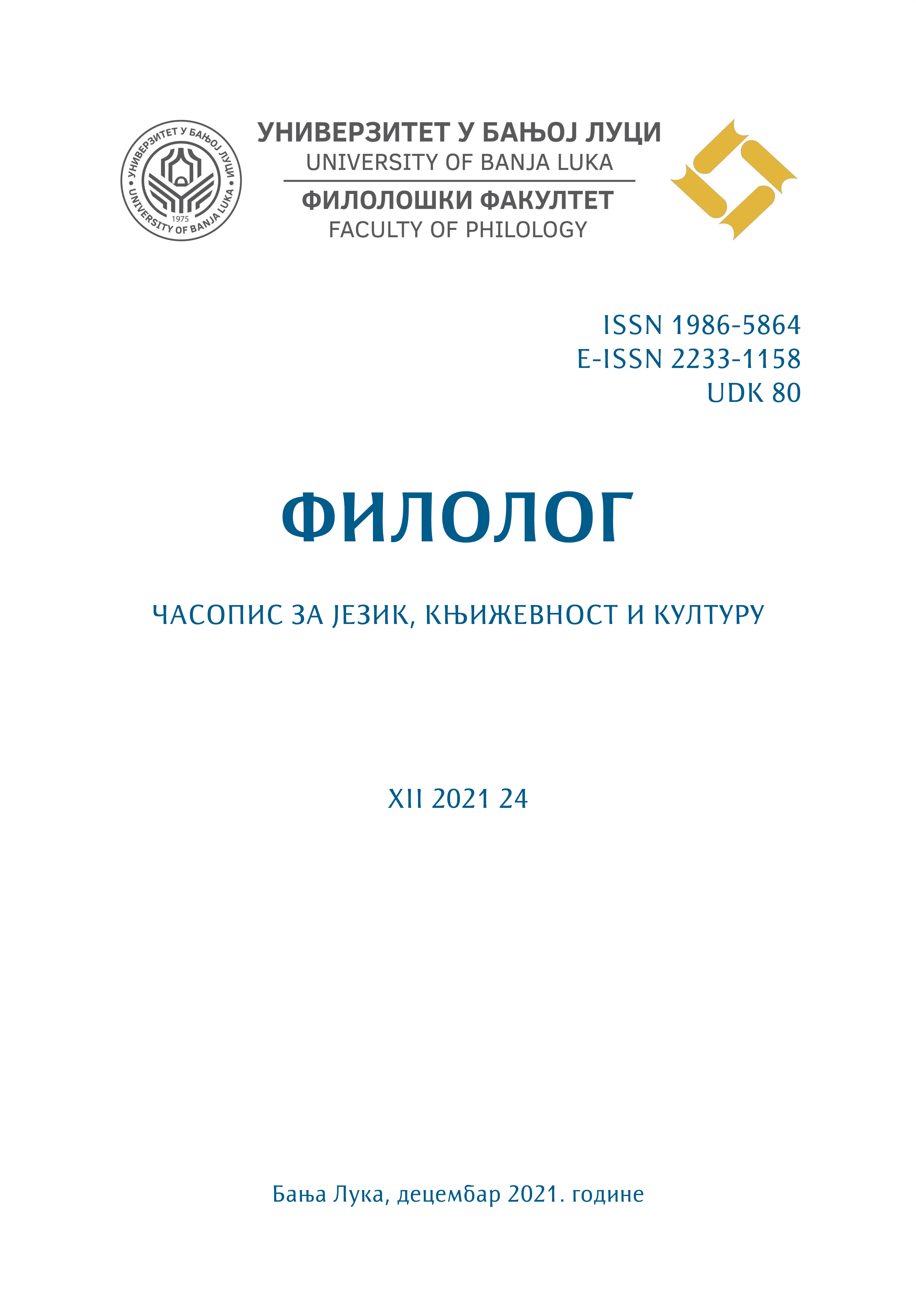KONTRASTIVNA I KONCEPTUALNA ANALIZA NEMAČKIH I SRPSKIH FRAZEOLOGIZAMA SA KOMPONENTOM TÜR/VRATA
A CONTRASTIVE AND CONCEPTUAL ANALYSIS OF THE GERMAN AND SERBIAN EXPRESSIONS WITH THE COMPONENT TÜR/VRATA
Author(s): Aleksandar NikolićSubject(s): Language and Literature Studies, Comparative Linguistics, South Slavic Languages
Published by: Филолошки факултет Универзитета у Бањој Луци
Keywords: expressions; door; equivalence; contrastive analysis; conceptual analysis; German;Serbian;
Summary/Abstract: The aim of this paper was to indicate the similarities and differences between the expressions with the component Tür/vrata (Eng. door) in German and Serbian. The corpus of this research consists of 25 expressions excerpted from the appropriate monolingual and bilingual dictionaries of both languages, where the source language is German and the target is Serbian. The corpus was first subjected to a contrastive analysis in order to determine the degree of equivalence between the two languages, with a distinction made between complete, zero and partial equivalence. The corpus was also subjected to a conceptual analysis, with the aim to establish whether the expressions were based on metaphor or metonymy and identify the differences in conceptualisation between the two languages. The results of the analysis showed that German and Serbian largely coincide when it comes to expressions with the mentioned component, and that metonymisation occurs more often in relation to metaphorisation. The expressions with the component Tür/vrata overlap to a considerable extent when it comes to conceptualisation. Doors usually represent obstacles or boundaries between interior and exterior space. In many examples, the key point is whether the door is open or closed. While the closed door implies the inaccessibility of what is in the closed space to all those who are in the external environment, the open door does the opposite. Based on that, we can conclude that phraseological semantics largely preserves the traces of symbolic and semantic values of this term. The differences in the conceptualization of the two languages are most noticeable in the examples where the contrastive observation identified a match only at the semantic level. The scientific methods used in this paper are the interlingual contrastive and conceptual analysis.
Journal: Филолог – часопис за језик, књижевност и културу
- Issue Year: 12/2021
- Issue No: 24
- Page Range: 186-201
- Page Count: 16
- Language: Serbian

